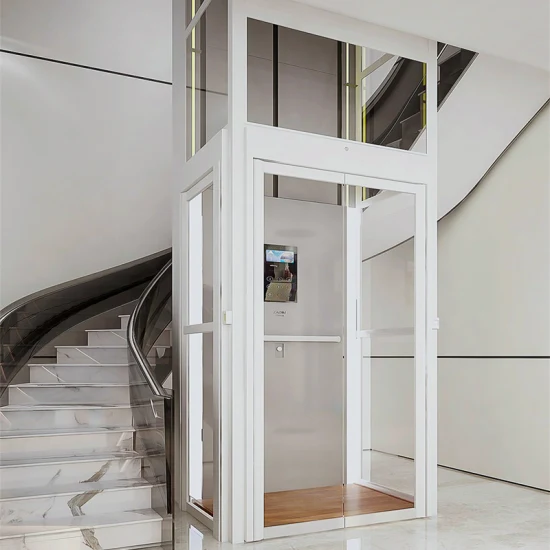Find Reliable Lift Repair Near Me for Fast and Affordable Solution
Find Reliable Lift Repair Near Me for Fast and Affordable Solution
Blog Article
Diving Into the World of Lifts: Usual Concerns Dealt With by Numerous Lift Devices
As we browse via the upright transport systems of modern-day buildings, lifts stand out as a crucial element of our day-to-day lives. From hydraulic elevators to traction systems and machine-room-less styles, each lift type comes with its set of usual problems.
Hydraulic Elevators
Hydraulic lifts, usually favored for low-rise structures, utilize fluid stress to regulate the movement of the lift vehicle (lift repair companies). This mechanism entails a hydraulic pump pushing oil into a cylinder, causing the elevator to move in the desired instructions. While hydraulic elevators are known for their smooth and peaceful operation, they do feature their very own set of common problems
One common problem with hydraulic elevators is oil leakage. Additionally, issues with the control system, such as malfunctioning shutoffs or a malfunctioning pump, can create disruptions in the elevator's motion.
Regular upkeep and prompt fixings are vital to make certain the smooth functioning of hydraulic elevators. By resolving these common problems proactively, building proprietors can reduce downtime and make sure the security and effectiveness of their upright transport system.
Traction Elevators
When considering vertical transportation systems in buildings, an additional typical kind other than hydraulic lifts is the traction elevator. Traction lifts run using a system of ropes and weights that move the lift automobile by grasping onto the hoist ropes. This mechanism enables smoother and quicker upright transportation compared to hydraulic systems.
Among the usual problems dealt with by grip elevators is rope wear. The continuous activity of the ropes within the traction system can cause deterioration gradually, possibly creating the elevator to malfunction or come to be risky for use. Regular examinations and maintenance of the ropes are important to make certain the lift's correct functioning and safety and security.
One more concern that grip lifts might experience is associated with the control system. Troubles with the control system can lead to issues such as irregular motion, hold-ups in action times, and even full shutdowns. Regular testing and maintenance of the control system are important to stop such issues and make certain the lift's reliability.
Machine-Room-Less (MRL) Lifts

Among the essential elements of MRL elevators is the portable gearless grip device that is installed within the hoistway. This machine efficiently drives the lift cars and truck without the demand for cumbersome equipment found in conventional grip elevators. In addition, MRL lifts generally use a weight system to stabilize the car, additional improving their power efficiency.
Regardless of their benefits, MRL lifts might deal with difficulties associated with upkeep and fixing because of the confined room for devices setup. Availability for servicing parts within the shaft can be limited, requiring specialized training for technicians. Appropriate maintenance timetables and regular assessments are vital to guarantee the ongoing smooth operation of MRL lifts.
Overloading and Weight Restriction Issues
Overloading and weight limitation concerns are critical issues in lift Visit This Link operations. Elevator suppliers layout raises with particular weight capacities to ensure traveler safety and security and tools longevity.
When elevators are strained, it puts too much pressure on the motor, cables, and various other elements, possibly causing breakdowns or breakdowns. If they find excess weight, security systems such as sensing units and overload sensors are in place to protect against elevators from relocating. Furthermore, surpassing weight restrictions can result in enhanced power usage and damage on the lift system.
To minimize overloading problems, developing supervisors must find out here plainly present weight restrictions in elevators and inform passengers on the relevance of adhering to these limitations - lift repair companies. Regular upkeep checks by qualified specialists can additionally help ensure that lifts are operating within risk-free weight parameters. By dealing with overloading and weight restriction issues proactively, structure proprietors can boost elevator safety and effectiveness
Electrical System Failures
Going beyond weight limitations in elevators can not just lead to mechanical problems yet additionally possibly add to electrical system failings within the lift infrastructure. Electrical system failings are a vital problem in elevator procedure, as they can create unexpected closures, breakdowns, or perhaps safety risks. One usual electrical issue is the getting too hot of components as a result of too much present circulation triggered by overwhelming the elevator past its capacity. This can bring about harm to the wiring, control, or electric motor systems, resulting in pricey fixings and downtime.
Normal upkeep and examinations are crucial to identify and resolve potential electrical problems quickly, ensuring the secure and efficient operation of elevator systems. By adhering to weight limits and carrying out routine electric system checks, structure owners can reduce the threat of electric failures in elevators.
Final Thought

Hydraulic elevators, frequently favored for low-rise buildings, utilize fluid pressure to regulate the activity of the lift car.When thinking about upright transport systems in buildings, an additional common type aside from hydraulic elevators is the traction lift. Traction elevators run using a system of ropes and counterweights that move the elevator auto by grasping onto the hoist ropes. Unlike traditional lifts that require a different machine area to house the tools, MRL lifts integrate most of the elements within the shaft, getting rid of the need he said for a devoted equipment room.In conclusion, lifts face typical issues such as hydraulic malfunctions, grip system failings, and electric system problems.
Report this page